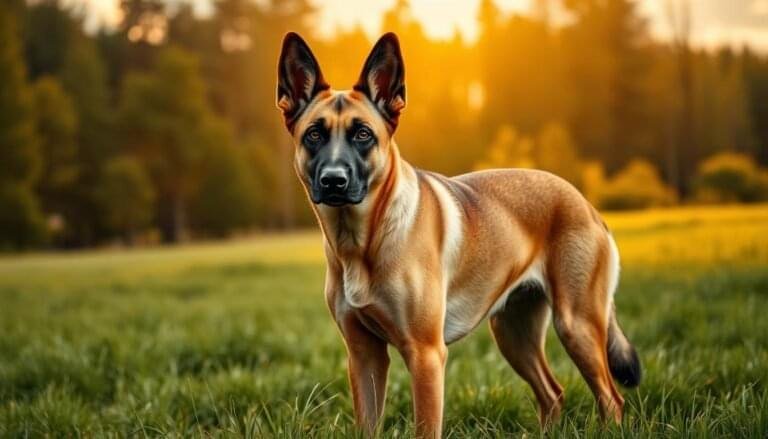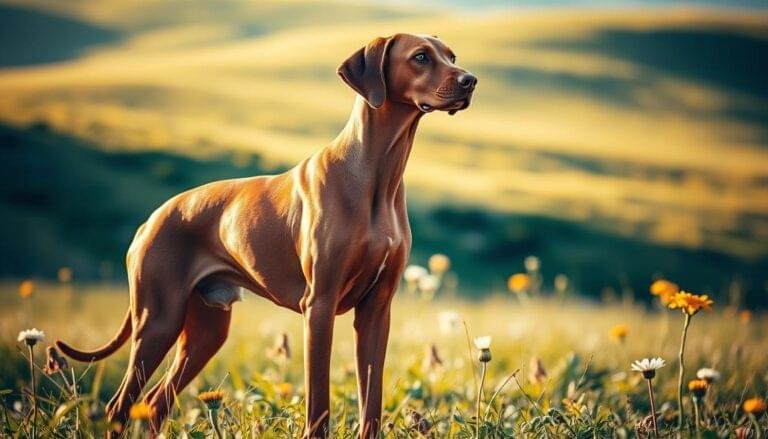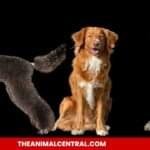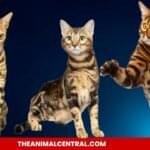Did you know Pugs have been around for over 2,400 years? They’ve been charming humans for centuries! Their history is as rich as their wrinkled faces.
In this guide, we’ll explore the world of Pugs. We’ll look at their royal origins in ancient China and their unique features. We’ll also see why they’re such beloved pets today.
If you love Pugs or are thinking of getting one, you’re in for a treat. Get ready to learn ten fascinating facts about Pugs. These facts show why they’ve won hearts for centuries.
Key Takeaways
- Pugs have a history dating back to 400 B.C. in ancient China
- They were originally bred as companions for ruling families
- Pugs have distinctive physical features, including their wrinkled faces
- The breed has connections to royalty and historical events
- Pugs are known for their playful nature and affectionate personality
- They require specific care due to their unique health considerations
Understanding Pug Behavior
Pugs are charming dogs with unique personalities. These adorable puppies grow into adults with distinct traits. They stand out from other breeds.
Playful Nature
Pugs love to play, even though they’re not high-energy dogs. They enjoy short activities. About 60% of pugs circle or chase their tails before resting.
Affection Levels
These dogs love human attention. Over 70% of pugs paw or nudge their owners for love. This comes from their history as companion dogs.
Social Interaction
Pugs are social and love to interact. They use different sounds to communicate. Their faces and tails show their mood, like happiness or anxiety.
Behavioral Concerns
While friendly, pugs can be stubborn. About 80% need consistent training. Anxiety affects some, leading to destructive behaviors like excessive licking or chewing.
| Behavior | Percentage | Notes |
|---|---|---|
| Circling before rest | 60% | Energy release |
| Seeking affection | 70% | Pawing, nudging |
| Stubborn behavior | 80% | Requires consistent training |
| Anxiety symptoms | 20% | Destructive behaviors |
Knowing these behaviors helps live in harmony with your pug. Their quirks make them great companions for those willing to understand them.
Health Considerations for Pugs
Pugs face special health challenges because of their flat faces. This can cause breathing problems and other issues. I’ll talk about common health problems, how long they live, how to prevent health issues, and why regular vet visits are important.
Common Ailments
Brachycephalic obstructive airway syndrome (BOAS) is a big worry for Pugs. Their narrow nostrils and face can make it hard to breathe. This can lead to loud breathing and stopping often during walks.
Eye problems affect up to 60% of Pugs. Their eyes stick out, making them more likely to get eye ulcers. Pugs also often get patella luxation and can develop hip dysplasia.
Lifespan Expectations
Pugs usually live between 13-15 years. But, health problems can shorten their life. Encephalitis is a serious condition that can be deadly. Spinal problems from hemivertebrae are also a risk.
Early treatment and care are key to a longer, healthier life for Pugs.
Preventative Care
Preventative care is very important for Pugs. Regular dental check-ups are a must because dental problems happen faster in Pugs. Brushing their teeth every day is best.
Allergies are common in Pugs, often causing itchiness. Things like dust mites and pollen can trigger allergies. Food allergies, mostly protein-related, might need special diets.
Regular Vet Visits
I suggest vet visits every six months for Pugs. These visits help catch BOAS symptoms, eye problems, and other issues early. Anal gland checks every three to six months are also important.
Regular tests for intestinal parasites are key, too, if your Pug eats feces. With the right care, Pugs can live happy, healthy lives.
| Health Issue | Prevalence | Recommended Check-up |
|---|---|---|
| BOAS | Common | Every 6 months |
| Eye Problems | Up to 60% | Every 6 months |
| Dental Issues | High | Every 6 months |
| Anal Gland Problems | More prone | Every 3-6 months |
Pug Care Essentials
Caring for a pug is all about meeting their special needs. These adorable dogs need extra care to stay healthy and happy. Let’s dive into the key aspects of pug care.
Grooming Routines
Grooming is key for a pug’s health. Their wrinkly skin must be cleaned daily to avoid infections. Use antibacterial wipes on their face folds.
Brush their coat with a natural bristle brush. This helps manage shedding and keeps their coat shiny.
Exercise Requirements
Pugs don’t need a lot of exercise but do need some. Short walks and playtime indoors are great. Use a harness instead of a collar to avoid neck strain.
Home Environment
Make your home pug-friendly. Remove sharp edges near their eyes to protect them. Pugs are sensitive to extreme temperatures.
Provide a cooling bed in warm weather. An orthopedic bed can also help older pugs sleep better.
Training Techniques
Pugs are smart but can be stubborn. Use positive reinforcement and keep training short. Puzzle toys are great for mental stimulation and training.
| Care Aspect | Recommendation | Frequency |
|---|---|---|
| Facial Cleaning | Antibacterial Wipes | Daily |
| Coat Brushing | Natural Bristle Brush | 2-3 times per week |
| Exercise | Short Walks | Daily |
| Mental Stimulation | Puzzle Toys | Several times a week |
Choosing the Right Pug for You
Finding the perfect pug companion requires careful thought. Whether you prefer a fawn pug or a black pug, knowing your options is essential. This helps you find the perfect match for you.
Adoption vs. Breeder
Choosing between adoption and a breeder depends on your preferences and situation. Adopting from a rescue means welcoming a mature pug with a known personality. Breeders offer puppies, but you’ll need to wait several months for one from a reputable source.
Assessing Temperament
Pug puppies can be categorized into three types: Curious Investigators, Timid and Cautious, and Shy and Fearful. Curious Investigators are often the first choice, showing well-adjusted behaviors. Timid puppies might be better for homes without children. Shy puppies need dedicated owners who can help with socialization.
Pug Rescue Organizations
Groups like Pugalug Pug Rescue have helped over 300 pugs find homes. These organizations provide medical care and foster homes, ensuring pugs are ready for adoption. Rescued pugs often have known personalities and are a good fit for families with children or other pets.
| Pug Type | Characteristics | Ideal Home |
|---|---|---|
| Curious Investigators | Outgoing, social | Any family type |
| Timid and Cautious | Reserved, needs time | Quiet homes, no kids |
| Shy and Fearful | Avoidant, under-socialized | Patient owners, stay-at-home |
All pugs need love and care, regardless of their temperament or origin. Choose wisely, considering your lifestyle and the pug’s needs for a harmonious match.
The Pug Diet: What to Feed
Feeding your Pug the right diet is key for their health. Pugs are prone to obesity, so they need careful nutrition.
Nutritional Needs
Pugs need a diet full of proteins, fats, carbs, vitamins, and minerals. Look for dog food with 27% to 38% protein. Good protein sources are chicken, turkey, lamb, and fish.
Recommended Brands
ProDog formulas are great for Pugs. Their Muscle+ blend has 76% quality protein, helping muscles grow. For a complete meal, try the 80-10-10 raw dog food ratio with ProDog Boost multivitamin.
Treats and Snacks
Give treats in moderation. Pugs can get too excited about food. Healthy snacks like blueberries or carrots are good for their eyes. Treats should not be more than 10% of their daily calories.
| Nutrient | Importance for Pugs | Recommended Sources |
|---|---|---|
| Protein | Maintains lean muscle mass | Chicken, turkey, lamb, fish |
| Omega-3 Fatty Acids | Supports skin and joint health | Fish oil, flaxseed |
| Fiber | Aids digestion, weight management | Vegetables, whole grains |
Feeding your Pug a balanced diet tailored to their needs is essential. It ensures a happy, healthy life for your furry friend.
Exercise and Activity Needs for Pugs
Pugs are charming dogs that need a balanced exercise routine. Despite their small size, they grow into adults needing regular activity. This keeps them healthy and happy.
Daily Exercise Ideas
I suggest about 30 minutes of exercise daily for your Pug. Break it into two 15-minute sessions to avoid overdoing it. A mix of walking and gentle play is best. Pugs are sensitive to heat and can have breathing problems.
Outdoor Playtime
Choose cooler times for outdoor play with your Pug. Stay away from temperatures over 90°F (32.2°C) to prevent overheating. Short walks, fetch games, and supervised off-leash time in a secure area are good choices. Always carry water and a collapsible bowl for hydration breaks.
Indoor Games
On hot days or for extra fun, indoor games are great for Pugs. Try hide-and-seek with treats, gentle tug-of-war, or puzzle toys. These games keep their minds and bodies active without overexertion.
Every Pug is different. Adjust activities based on your dog’s age, health, and energy. Regular exercise helps keep a healthy weight, supports joint health, and strengthens your bond.
The Pug’s Living Environment
Creating the perfect home for a wrinkly dog like a Pug requires careful consideration. These adorable companion dogs thrive in specific living conditions that cater to their unique needs.
Best Living Conditions
Pugs adapt well to various living spaces, from cozy apartments to spacious houses. The key is providing a comfortable, temperature-controlled environment. These wrinkly dogs are sensitive to extreme temperatures, so maintaining a moderate indoor climate is essential for their well-being.
Indoor vs. Outdoor Living
Pugs are indoor dogs through and through. Their short snouts make them prone to breathing difficulties, specially in hot or humid weather. Indoor living protects them from extreme temperatures and allows for closer companionship with their human family.
Space Requirements
While Pugs don’t need vast spaces, they do require enough room for short bursts of play and lounging. A small apartment can suffice if it includes:
- A cozy bed in a quiet corner
- Space for food and water bowls
- An area for interactive toys
- Easy access to the outdoors for potty breaks
Remember, Pugs are social creatures. They thrive on human interaction and can become stressed if left alone for extended periods. Creating a Pug-friendly home means balancing physical comfort with emotional well-being. This ensures your wrinkly companion dog feels loved and secure in their living space.
Traveling With Pugs
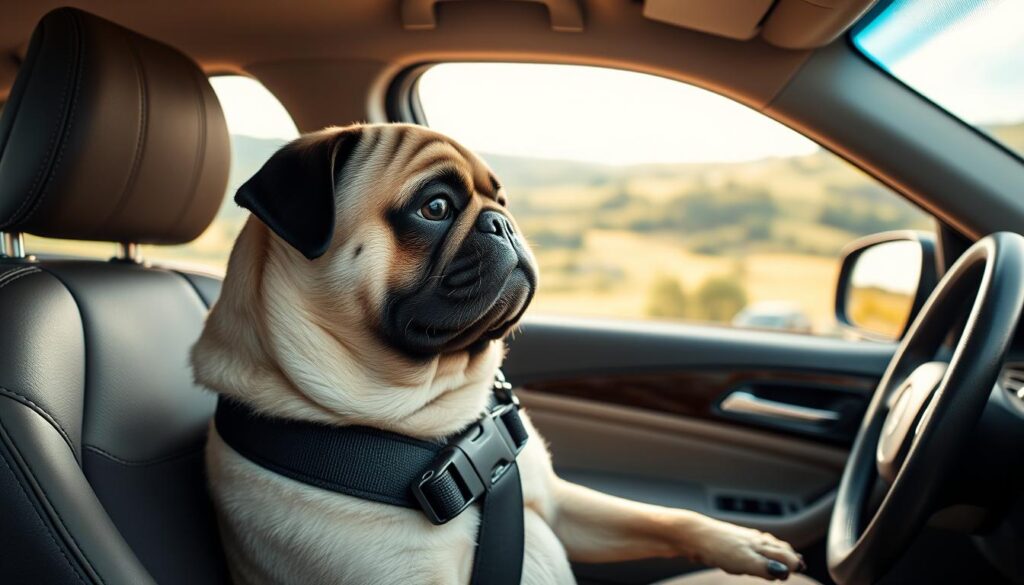
Traveling with a pug can be fun, but it needs careful planning. Pugs, being brachycephalic, have special needs for travel. These must be considered when you’re on the road or in the air.
Preparing for Road Trips
For a road trip, pack water, travel bowls, and comfort items. I use baby car shades to keep it cool inside. This is because pugs can’t handle heat well.
Remember, cars can get much hotter than outside. This can be dangerous for pugs, leading to heat stroke.
Safety Tips for Traveling
For air travel, it’s important to know that pugs are at risk. 50% of dog deaths in cargo are brachycephalic breeds. Many airlines don’t let pugs fly in cargo anymore.
If your pug can fly in the cabin, check the weight limit. It’s usually 20 pounds for your pug and carrier together. Always choose direct flights to reduce stress and breathing problems.
Accommodations
When booking a place to stay, find one that’s pug-friendly and has air conditioning. The best temperature for pugs is under 85°F (30°C). Make sure there’s enough space for your pug to move around.
Bring familiar items to make the place feel like home. With the right planning, traveling with your pug can be enjoyable for both of you.
Understanding Pug Grooming
Pug grooming is key to caring for these adorable wrinkly dogs. As a pug owner, I’ve learned that regular grooming keeps them looking cute. It also promotes their health and well-being.
Brushing and Bathing
Pugs have a double coat that sheds a lot. I brush my pug for about 5 minutes daily to manage shedding and keep their coat healthy. Bathing takes around 30 minutes per session. It’s important not to overdo baths as it can dry out their skin.
Nail Trimming
Trimming a pug’s nails takes about 30 seconds for maintenance. Their dark nails can make it tricky, so I’m always careful to avoid cutting the quick. Regular trims are necessary as pugs don’t naturally wear down their nails through activity.
Ear and Eye Care
Cleaning my pug’s wrinkles is key to prevent infections. I use hypoallergenic wipes and spend about 2 minutes cleaning their facial folds weekly. This helps avoid skin irritation and crusty buildup common in wrinkly dogs.
A quick grooming routine can be done in under 10 minutes if maintained regularly. This includes brushing, wrinkle cleaning, and a quick nail check. By staying on top of these tasks, I’ve saved money on professional grooming and reduced the need for monthly deep cleans.
Remember, never shave your pug as it can compromise their temperature-regulating double coat. With consistent care, your wrinkly dog will stay healthy, comfortable, and looking their best!
Addressing Health Issues
Pugs, as a brachycephalic dog breed, face unique health challenges. I’ll explore common issues and how to manage them effectively.
Breathing Difficulties
Pugs often struggle with Brachycephalic Obstructive Airway Syndrome (BOAS). This condition causes snoring, wheezing, and exercise intolerance. To help your Pug breathe easier, keep them at a healthy weight and avoid hot weather.
Skin Conditions
Skin fold dermatitis is common in Pugs due to their wrinkly faces. Clean your Pug’s folds regularly to prevent infections. Pugs can develop skin allergies as early as one year old. Watch for excessive scratching or redness.
Weight Management
Obesity is a serious concern for Pugs. Extra weight worsens breathing problems and increases risks of joint issues, heart disease, and diabetes. Feed your Pug two to three small meals daily. Stick to a consistent exercise routine to keep them fit and healthy.
| Health Issue | Prevention | Management |
|---|---|---|
| BOAS | Weight control | Avoid heat, surgery if severe |
| Skin Conditions | Regular cleaning | Medicated wipes, vet-prescribed treatments |
| Obesity | Portion control | Daily exercise, diet adjustment |
Regular vet check-ups are key for Pugs. Aim for annual visits, or twice yearly for older Pugs. Early detection of health issues can significantly improve your Pug’s quality of life and longevity.
Socializing Your Pug
Socializing pug puppies is key for their growth into friendly dogs. Starting early, between 8 to 12 weeks, lays the groundwork for a confident pug.
Early Socialization
Expose your pug to different places during the first six months. This boosts their adaptability, with studies showing better behaviors in new settings. Introduce them to various surfaces and sounds like vacuums and radios to build confidence.
Introducing to New People
Pugs are fond of people, including kids. Let them meet new people at their own pace. This helps build trust and prevents anxiety. About 70% of pug owners take their dogs to outdoor cafés, improving their social skills.
Playdates with Other Dogs
Begin with one-on-one playdates to avoid overwhelming your pug. Choose neutral, outdoor spots to reduce territorial behavior. Small puppy training classes provide structured socialization with fewer participants. Remember, consistent socialization is vital – sadly, less than 50% of dog owners keep it up after the puppy stage.
By following these tips, your pug will become a sociable, confident companion dog. They’ll be comfortable in many situations.
The Bonding Experience with Pugs
The bond between pugs and their owners is truly special. These charming dogs love being around people. They make great companions for those who want a close bond with a pet.
Strengthening your connection with your pug is easy. You can do it through daily activities, training, and understanding their body language.
Daily Activities
Pugs enjoy spending time with their humans. Simple things like watching TV together or sitting on your lap can strengthen your bond. Walking in new places is also great, as it creates shared experiences.
Remember, pugs are known as “velcro dogs” because they love to be close. So, let them be as clingy as they want.
Training as Bonding
Training sessions are a great way to bond with your pug. Positive reinforcement works best. Pugs love learning new tricks, which helps you communicate better.
Regular training also helps manage any behavioral issues. This ensures a happy and harmonious relationship.
Understanding Body Language
It’s important to understand your pug’s body language. They show love by following you, wagging their tails, and getting excited when you come home. Recognizing these signs helps you understand their needs and feelings better.
| Breed Overview | Details |
|---|---|
| Temperament | Charming, affectionate, social |
| Exercise Needs | Low to moderate |
| Grooming | Regular brushing, facial fold cleaning |
| Health Concerns | Breathing issues, eye problems, obesity |
| Lifespan | 12-15 years |
FAQ
Are Pugs good family dogs?
How often should I groom my Pug?
What are common health issues in Pugs?
How much exercise does a Pug need?
Are Pugs easy to train?
What’s the average lifespan of a Pug?
Are Pugs good apartment dogs?
How much do Pugs shed?
Can Pugs be left alone during the day?
What colors do Pugs come in?
References
| Organization/Source | Description | URL |
|---|---|---|
| Wikipedia | General information on Pugs, including history, physical traits, and temperament. | https://en.wikipedia.org/wiki/Pug |
| American Kennel Club (AKC) | Detailed breed standards and care information for Pugs. | https://www.akc.org/dog-breeds/pug/ |
| The Kennel Club (UK) | Breed standards, health advice, and characteristics of Pugs in the UK. | https://www.thekennelclub.org.uk/search/breeds-a-to-z/breeds/toy/pug/ |
| Britannica | Overview of Pug lifespan, size, health, and historical significance. | https://www.britannica.com/animal/pug |


